
A Birding Big Year in a Small Valley
Twenty-two people stand silently at the edge of a dirt road near Basalt, their binoculars trained on a steep hillside covered in a dense tangle of scrub oak and vines. Like a sportscaster, I work to call the locations and movements of four orange-and-yellow birds that are flitting in and out of view among the foliage.
The flame-colored plumage of these western tanagers is lit by the morning sun, and as the birders glimpse them through binoculars, hushed comments issue forth: an unfeigned “wow ... stunning” to my right, a whispered “hermosa” to my left. The only other sounds are the gentle rustle of the grass beneath our feet and the faint sounds of camera lenses and shutters.
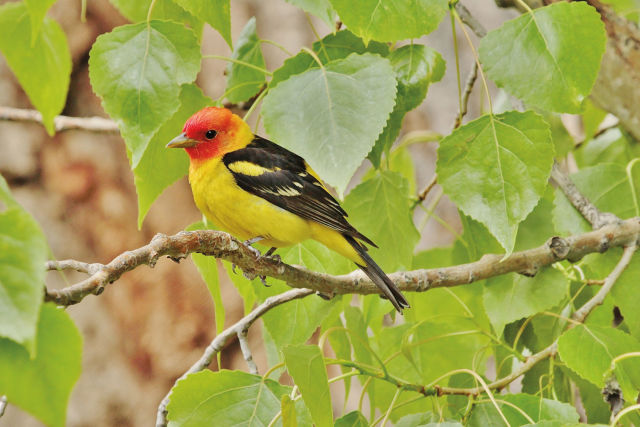
western tanager
This breathtaking moment was just one of many that photographer Mark Fuller and I shared during our “local big year” experience last year.
In the birding world, a traditional “big year” is an unofficial competition to see the greatest number of bird species in North America within a calendar year. The American Birding Association provides guidelines, as well as a place to which birders may report their lists. The first big year is attributed to a businessman who timed his work travel in 1939 for the best seasonal birding and saw 497 species. Most big year birders make it their singular focus, planning months in advance and putting their lives on hold during an intense race to chase birds, with rarities being key to besting the record. Many variations on the big year concept have arisen, based on the fun and challenge of birding within creative parameters. Currently, the trend is toward smaller and lower impact—one birder even did a North American big year on his bike—and sightings may be confined to a particular state, or county, or park. Global or backyard, these efforts fuel motivation, adventure, public awareness, and conservation.
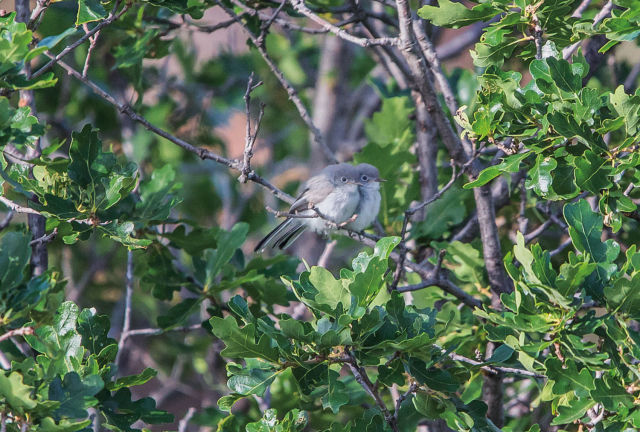
blue-gray gnatcatchers
What inspired us to embark on our big year? A semi-retired environmental consultant who also serves on local conservation boards, Mark is a passionate birder residing in Missouri Heights, where his yard is a veritable avian oasis.
Mother of two wonderful teenagers, I am also a writer and naturalist, as well as a guide for the Aspen Center for Environmental Studies (ACES) birding program. Over the past five years, Mark and I have frequently co-led ACES field trips and collaborated on the local best seller Birds of Aspen and the Roaring Fork Valley, released in 2018. After completing the book, we decided that a local big year would be the perfect way to keep a spotlight on the area’s remarkable birdlife.
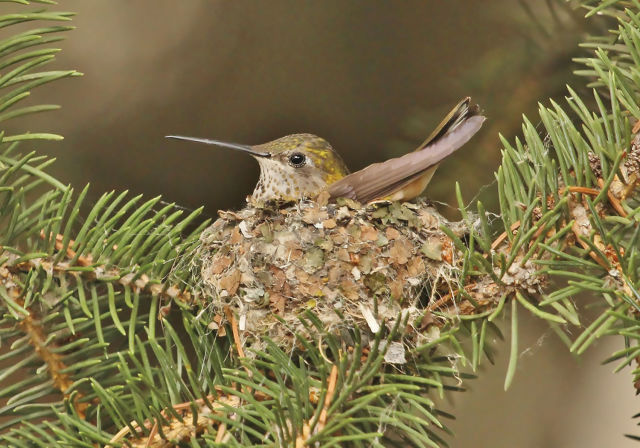
broad-tailed hummingbird
In January 2019, we set out to record our collective adventures—observing birds both individually and together—with the goal of showing that the Roaring Fork River watershed, an area about the size of Rhode Island, serves up world-class birding. We hoped that even a fairly casual effort such as ours would yield priceless moments and promote interest in birds. We did not aim to seek out extremely rare species or birds that were “off-piste,” that is, far away from their normal ranges. Instead, we focused on the valley’s local birdlife, an array of species reflecting our diverse landscape and geographical position in the southern Rockies. The 155 species featured in our book would serve as our target list.
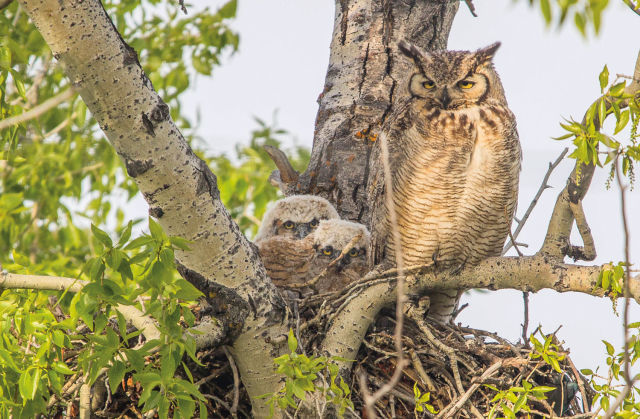
great horned owls
Off to a great start, Mark and I tromped through January snow in the midvalley, finding late-lingering mountain bluebirds, Lewis’s woodpeckers, and a striking black-and-white duck called the Barrow’s goldeneye. Later in spring, an otherwise elusive Virginia rail, engrossed with establishing his breeding territory in the sedge marsh at Aspen’s Hallam Lake, emerged briefly from cover and provided Mark with one of his best-ever photo opportunities.
An unusual and secretive wetland bird, the Virginia rail typically skulks within expanses of dense sedges and rushes. Its narrow body slips between the stalks without so much as bending a blade, its long toes supporting its weight on a mat of decomposing plant material suspended in the shallow water. Alerted to the bird’s presence by its loud kidik kidik kidik calls, we patiently watched and were rewarded with prime views of its gently decurved orange bill, richly colored plumage, and graceful movements. Frozen in place, we exchanged thrilled expressions while the rail nearly walked over Mark’s boots.
Frozen in place, we exchanged thrilled expressions while the rail nearly walked over Mark’s boots.
In May, we found ourselves birding in the mixed shrub and grassland habitats along Dry Park Road near Carbondale. We had hoped to find some of the small, streaky brown sparrows that occupy this arid ecosystem. Finding a lark sparrow with a bright green caterpillar in its bill was a coup: not only is this species, with its harlequin face pattern, one of the easier sparrows to identify, but this one was also tending nestlings, as confirmed by the food it was carrying.
This hardworking lark sparrow had paused to sing, caterpillar notwithstanding, announcing its territory. Birders rely in large part on breeding-season birdsong to locate and identify birds, and we had just scored. Watching this songster in the diffused sunlight, Mark and I enthused about the bird’s rich hues, which spanned the brown spectrum from beige to chestnut. As we turned away, we dissolved into laughter, realizing that we had just geeked out over shades of brown.
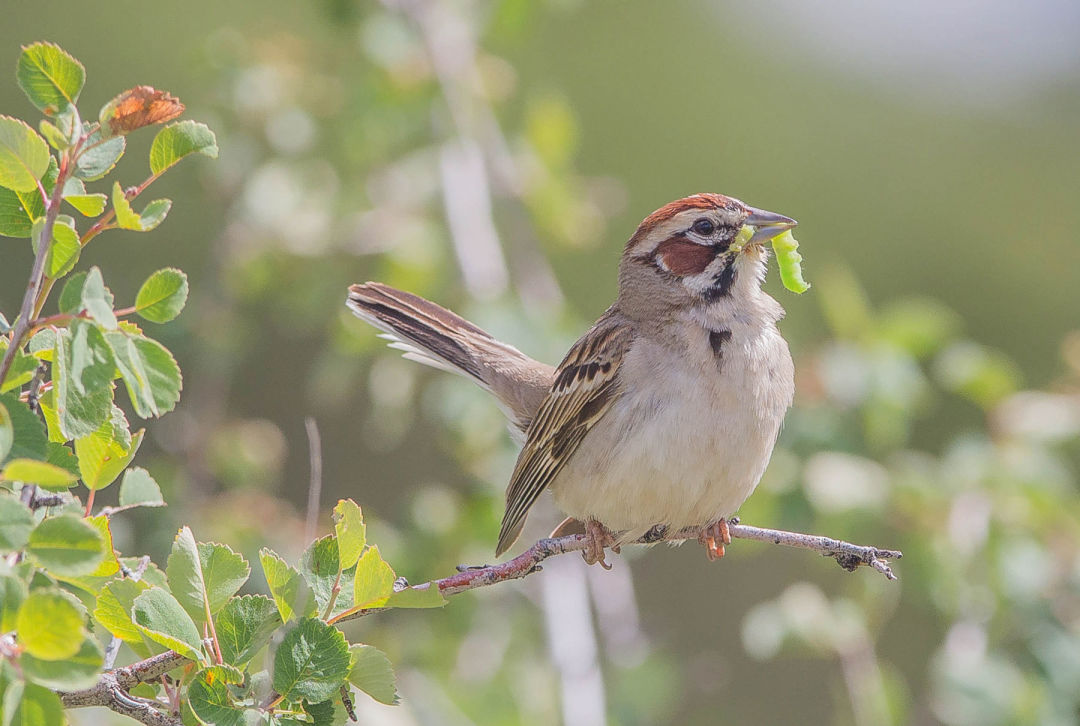
lark sparrow
As we turned away, we dissolved into laughter, realizing that we had just geeked out over shades of brown.
June is the peak of breeding activity in the Roaring Fork Valley, and birds in dry, sunny habitats, such as the mountain shrublands along the lower Sunnyside Trail, are among the first to fledge their young. Mark and I were on the trail one day participating in a special ACES field class taught by Ted Floyd, acclaimed birder, author, and editor of the American Birding Association’s magazine.
One advantage of being in a group of birders—with its collective, keen awareness—is that one can often find more specimens. In this instance, we saw a small gray bird fly into a distant serviceberry bush, leading us to an exquisite scene: two tiny blue-gray gnatcatchers sat side by side on a twig, obviously freshly fledged by the way they huddled together, the only experience they’d known since hatching in the cozy confines of their nest. The parents tended their brood with rapid food deliveries. In fact, everything a blue-gray gnatcatcher does is fast. In a matter of perhaps a half hour, the two fledglings would separate, driven by hunger and instinct toward independence. At a generous distance to avoid disturbing them, we soaked in views of the diminutive family through high-powered spotting scopes. This delicate and fleeting moment was a highlight for the class and yet another memorable part of our big year.
Few birds are more charismatic than the great horned owl, with its large, piercing yellow eyes, expressive ear tufts, and deadly talons. This dignified bird commands respect from its position at the top of the food chain. One of Mark’s favorite haunts for photographing birds is a 12-mile loop in Missouri Heights where he always finds interesting subjects among the patchwork of ranchland, scrub oak, sagebrush, pinyon-juniper woodland, and scattered subdivisions. One rainy day there in late April delivered nesting owls.
A sodden adult great horned owl sat dutifully in a ramshackle nest in the crotch of a leafless cottonwood tree. Mark visited every few days, pulling safely off the road well away from the owl family’s tree and using his truck as a blind from which he zoomed in with a long lens. Soon, two white, downy heads appeared alongside the brooding adult. Over the next six weeks, mottled browns replaced the white as the owlets molted into their first set of functional feathers. After the owlets began “branching”—sidestepping out on branches to perch gradually farther from the nest—their time to fledge was imminent. When Mark visited on June 10, the owlets were gone, likely somewhere in the vicinity learning the ropes of adult life. Consistently observing a bird family such as this one can provide as much satisfaction as checking off species on a long list.
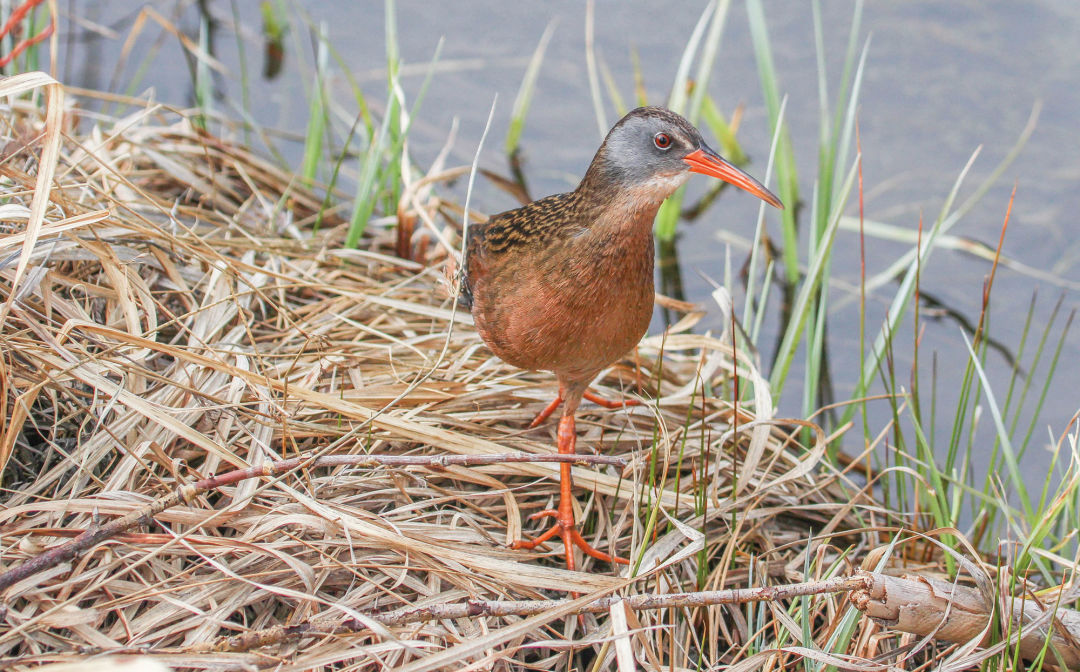
Virginia rail
Our big year continued into midsummer. We recorded species, dates, and locations in a shared spreadsheet and updated our journals regularly. One day in July, we were walking toward a site at Redstone Campground, a group of 11 birders in tow. When Mark and I had scouted here the day before, site number nine had been vacant. Now it was occupied, and we hoped to persuade the campers to allow us to look into the boughs of a massive spruce tree overhanging their camp chairs.
Extending handshakes and a copy of our book as a gift, we were welcomed by a nice couple from Illinois. Everyone then had the opportunity to peer carefully through scopes and see a female broad-tailed hummingbird on her nest: an inch-and-a-half-wide cup constructed of lichen bits, plant down, and spiderweb silk that adhered to a bough just above eye level. In the scope view, we could see the minute details of her feathers and bill as we imagined the pair of tiny eggs—the normal clutch size for this species—being warmed by her body. The campers were excited to learn of their special neighbor and moved their “living room” setup to give the hummingbird plenty of space. All they asked in return for the intrusion of birders were our autographs in their new book.
By September, we noticed an increasing abundance of birds throughout the valley, bolstered by the young of the year. Later in the fall, we noted the departure of insect-eating species and others that migrate and welcomed sightings of birds that arrive in the valley to spend the winter, such as buffleheads, common goldeneyes, and more bald eagles.
As winter arrived and our big year came to an end, we recognized that, although our combined list of 138 species fell short of our target by a dozen or so, we had more than met our goals of exploring the valley’s native birdlife, sharing the adventure and learning with others, and showing that our area is host to an impressive array of avian life. We had collected special moments and connections with people through birds.
Inspired to embark on your own adventures? Discovering birds can begin anytime. Step outside. The birds await you.
Flight Paths
Colorado is known for its avian diversity, with more than 500 species. The list for the region that includes the Aspen area, compiled by Roaring Fork Audubon, includes about 240 of those species, and Birds of Aspen and the Roaring Fork Valley further zooms in on the 155 species that are most relevant to our watershed.
Below is a selection of birds to look for in and around Aspen, along with local hot spots to help you find them. This list expands on the species featured in this article to include a selection of the area’s notable Western and high-elevation birds.
Upper Lost Man Trail, Independence Pass, Aspen
Brown-capped rosy-finch
White-tailed ptarmigan
Lower Lost Man Trail, Independence Pass, Aspen
Wilson’s warbler
Steller’s jay
Summit of Aspen Mountain
Red crossbill
Pine grosbeak
Canada jay
North Star Nature Preserve, Aspen
Violet-green swallow
Virginia rail
ACES Hallam Lake Nature Preserve, Aspen
Mountain chickadee
Pygmy nuthatch
Broad-tailed hummingbird
Sunnyside Trail, Aspen
Blue-gray gnatcatcher
Western tanager
ACES Rock Bottom Ranch, Basalt
Lewis’s woodpecker
Lark sparrow
More Resources
The Aspen Center for Environmental Studies offers birding opportunities throughout the summer, including weekly Tuesday morning outings with Weiss at Hallam Lake and Rock Bottom Ranch; several mornings at North Star Nature Preserve (in cooperation with Pitkin County Open Space and Trails); and several Birding by Habitat classes. Advance registration is required for all.
Roaring Fork Audubon has put its summer 2020 field trips on hold but may resume them later in the season, if possible.
The Colorado Birding Trail consists of 54 suggested driving itineraries, divided among three regions, to view birds and other wildlife around the state. In the Rocky Mountains region, the Roaring Fork Trail, for example, lists 15 sites, ranging from the Braille Trail along the road up Independence Pass to McClure Pass on Highway 133. The description for each site includes the types of birds most commonly found as well as detailed info on the location and any amenities.














































